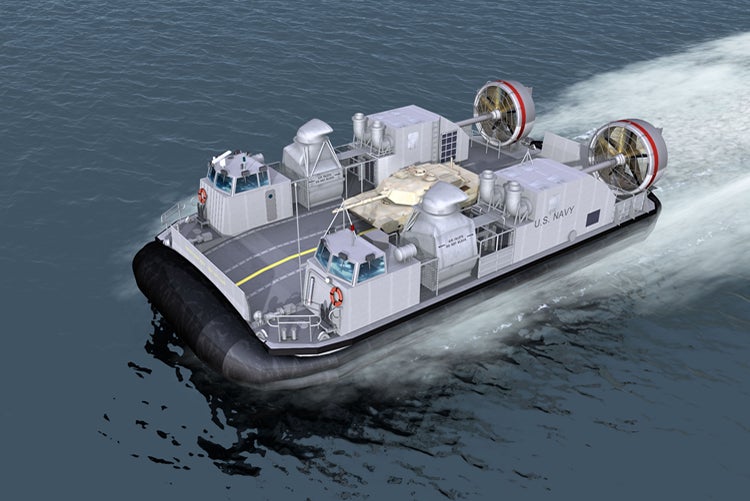
The US Navy has awarded a contract to Rolls-Royce to power a future naval fleet of Ship-to-Shore Connector (SSC) hovercraft.
Free Buyers Guide
Leading Guide to Submarine and Submersible Suppliers for the Naval Industry
Thank you.
Go deeper with GlobalData
Related Company Profiles
Your download email will arrive shortly.Please check your mail inbox to download buyer's guide
You may also be interested in:

Under the deal, Rolls-Royce will deliver MT7 gas turbines for connecting to a sophisticated gearbox system on each SSC to provide propulsion and lift.
Rolls-Royce Naval president Andrew Marsh said: "Our gas turbine technology will increase the power of the hovercraft by 25%, compared to the previous generation, enabling each craft to transport up to 74t of cargo at speeds over 35k.
"At the same time, our engines will improve fuel efficiency by 11%."
The company will also design and develop air intake and exhaust systems for the SSC fleet.
Rolls-Royce will partner with Textron Systems, which has been awarded a $212.7m contract to construct a SSC test and training craft to replace the US Navy’s current landing craft, air cushioned (LCAC) vehicle, which is nearing the end of its service life.
Featuring modern turbine materials and technology, the MT7 serves as power system to support a range of naval applications, such as main propulsion and power generation.
The SSC will be designed to support the rapid transfer of personnel and heavy equipment for navy and US Marine Corps (USMC) from sea bases to shore.
Deliveries of the connector are scheduled to begin in 2017, while the initial operational capability is expected to be achieved in 2020.
Image: US Navy’s Ship-to-Shore Connector (SSC) hovercraft. Photo: © Rolls-Royce plc.
Free Buyers Guide
Leading Guide to Submarine and Submersible Suppliers for the Naval Industry
Thank you.
Your download email will arrive shortly.Please check your mail inbox to download buyer's guide
You may also be interested in:

By downloading this Buyers Guide, you acknowledge that GlobalData UK Limited may share your information with our partners/sponsors who may contact you directly with information on their products and services.
Visit our Privacy Policy for more information about our services, how GlobalData may use, process and share your personal data, including information on your rights in respect of your personal data and how you can unsubscribe from future marketing communications. Our services are intended for corporate subscribers and you warrant that the email address submitted is your corporate email address.



